Tools Required
| • | J 34730-1A Fuel Pressure Gauge |
| • | J 39765 Fuel Sender Lock Nut Wrench |
Removal Procedure
Caution: Provide additional support when a vehicle is on a hoist:
• Before removing parts, support the opposite end. This helps prevent
the vehicle from slipping off. • Before removing major components, chain the vehicle frame to the
hoist pads at the same end as the removal. This helps avoid a tip-off.
- Relieve the fuel system pressure. Refer to Fuel Pressure Relief .
- Raise the vehicle and suitably support.
- Drain the fuel tank. Refer to Fuel Tank Draining .
- Disconnect the fuel feed pipe (1) at the in-line fuel filter and return pipe (2) near the in-line fuel filter.
- Grasp both ends of the fuel feed pipe connection and twist 1/4 turn in each direction to loosen any dirt in quick connect fittings.
- Blow out dirt from quick connect fittings, using compressed air.
- Squeeze the plastic tabs of male end connector of fuel filter.
- Pull connection apart.
- Repeat steps 5 through 8 for the other fitting.
- Disconnect the clamps (3) at the fuel filler neck (2) and fuel filler neck vent pipe (1) at the fuel tank (4).
- Remove the fuel filler neck (2) and fuel filler neck vent pipe (1) from the fuel tank (4).
- Disconnect the fuel sender (1) electrical connector.
- Remove the exhaust heat shield screws and reposition shield.
- Support the fuel tank and remove the fuel tank retaining strap bolts (2) from the fuel tank retaining strap (3).
- Lower the fuel tank and disconnect the EVAP pipe.
- Inspect the connectors for dirt and damage. Clean or replace as required.
- Remove the fuel sender assembly (1) from the fuel tank. Refer to Fuel Sender Assembly Replacement .
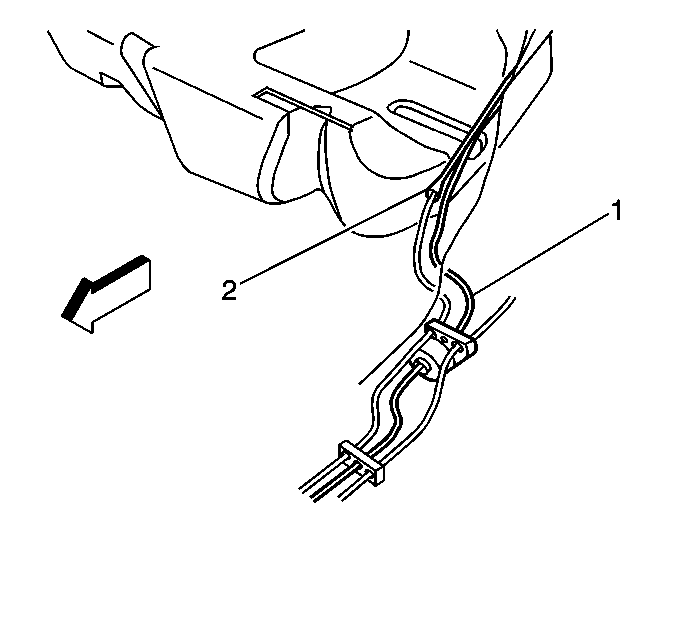
Important: If nylon fuel feed or return pipes become kinked, and cannot be straightened, they must be replaced.
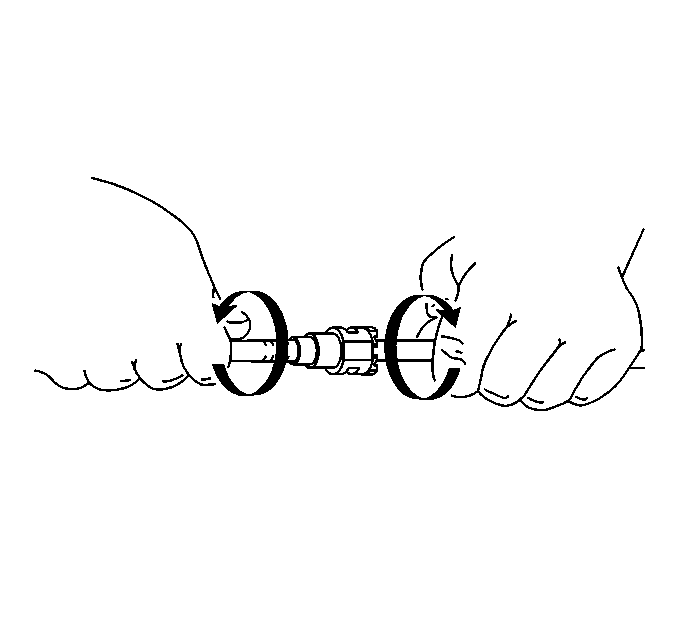
Caution: Wear safety glasses when using compressed air in order to prevent eye injury.
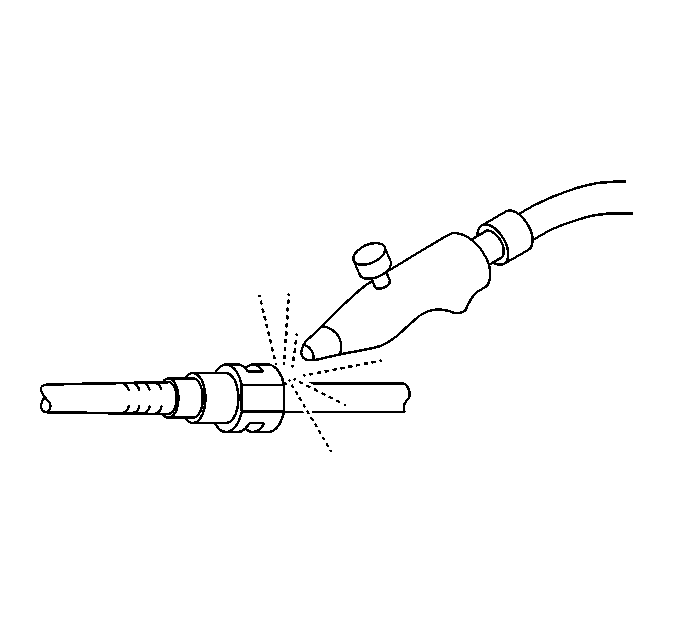
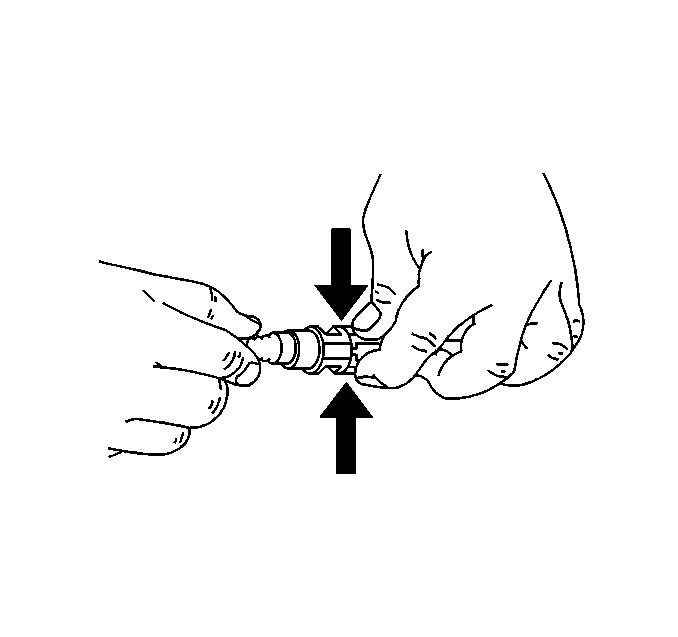
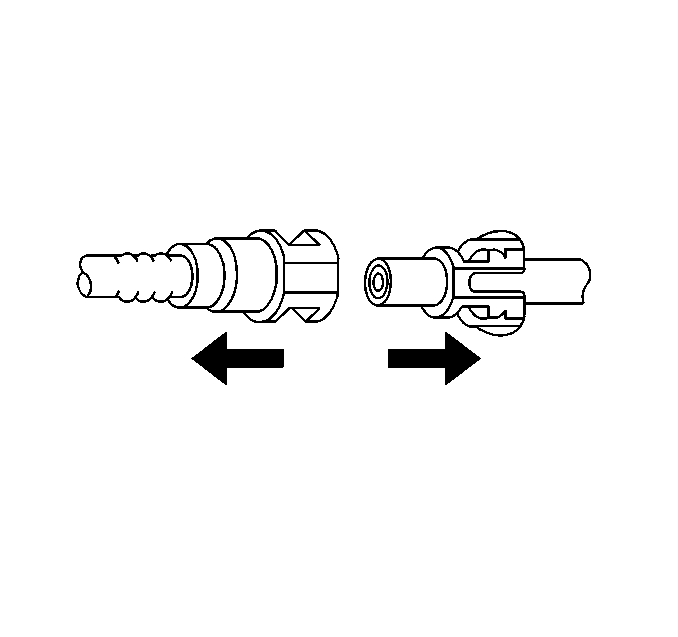
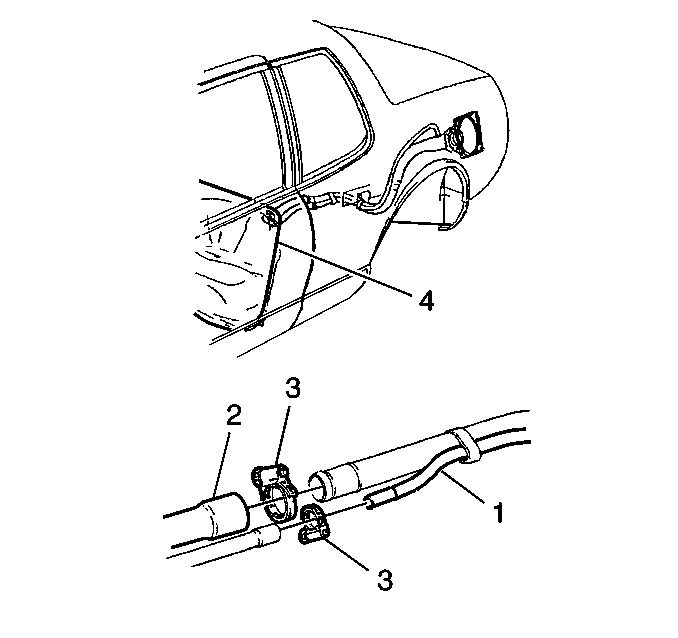

Notice: Do not bend the fuel tank straps as this may damage the straps.
Installation Procedure
- Lightly lubricate the inside diameter of the lip seal with clean engine oil.
- Install fuel sender assembly (1) into the fuel tank (4). Refer to Fuel Sender Assembly Replacement .
- Install fuel tank retaining straps (3) attaching bolts (2) with the aid of an assistant to the fuel tank (2).
- Raise the fuel tank and connect EVAP pipe.
- Install exhaust heat shield screws.
- Connect the fuel sender electrical connector.
- Install the fuel filler neck (2) and fuel filler neck vent pipe (1) at the fuel tank (4).
- Install the clamps (3) at the fuel filler neck (2) and fuel filler neck vent pipe (1).
- Apply a few drops of clean engine oil to the male connector pipe ends.
- Push connectors together to cause the retaining tabs/fingers to snap into place.
- Pull on both ends of each connection to make sure connection is secure, once installed.
- Lower the vehicle.
- Connect the negative battery cable.
- Add fuel to the fuel tank.
- Install the fuel filler cap.
- Install the intake manifold top cover.

Important: Always install a new lip seal when servicing the modular fuel sender assembly.
Important: Assure proper location of fuel sender pipes.
Notice: Use the correct fastener in the correct location. Replacement fasteners must be the correct part number for that application. Fasteners requiring replacement or fasteners requiring the use of thread locking compound or sealant are identified in the service procedure. Do not use paints, lubricants, or corrosion inhibitors on fasteners or fastener joint surfaces unless specified. These coatings affect fastener torque and joint clamping force and may damage the fastener. Use the correct tightening sequence and specifications when installing fasteners in order to avoid damage to parts and systems.
Tighten
Tighten the fuel tank strap bolts to 46 N·m (34 lb ft).

Tighten
Tighten the clamps to 2.5 N·m (22 lb in).
Caution: Always apply a few drops of clean engine oil to the male pipe ends before connecting the fuel pipe fittings in order to reduce the risk of fire and personal injury. This will ensure proper reconnection and prevent a possible fuel leak. During normal operation, the O-rings located in the female connector will swell and may prevent proper reconnection if not lubricated.
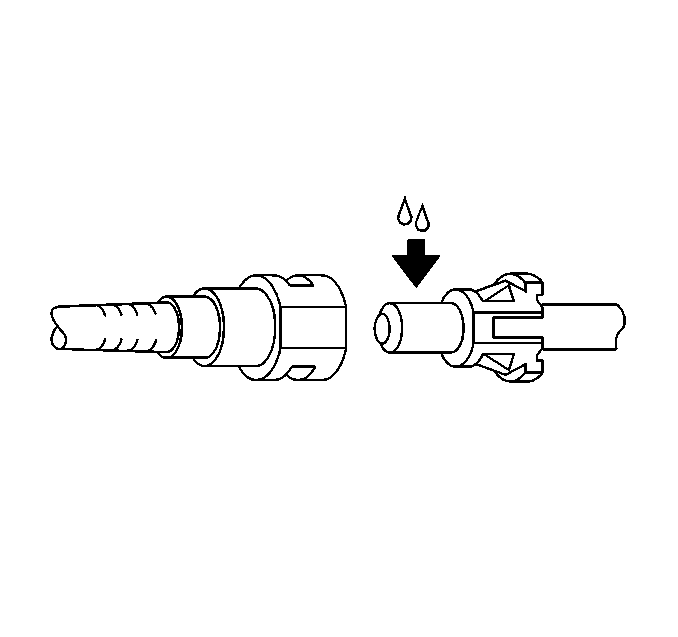
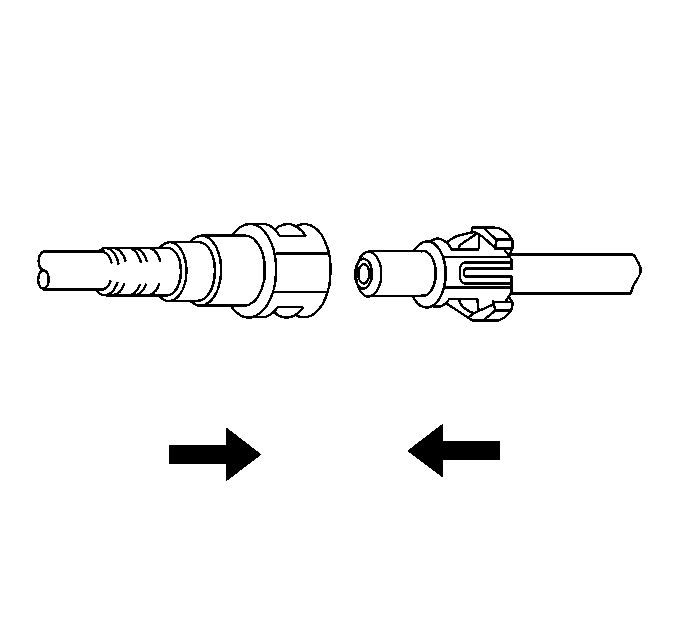
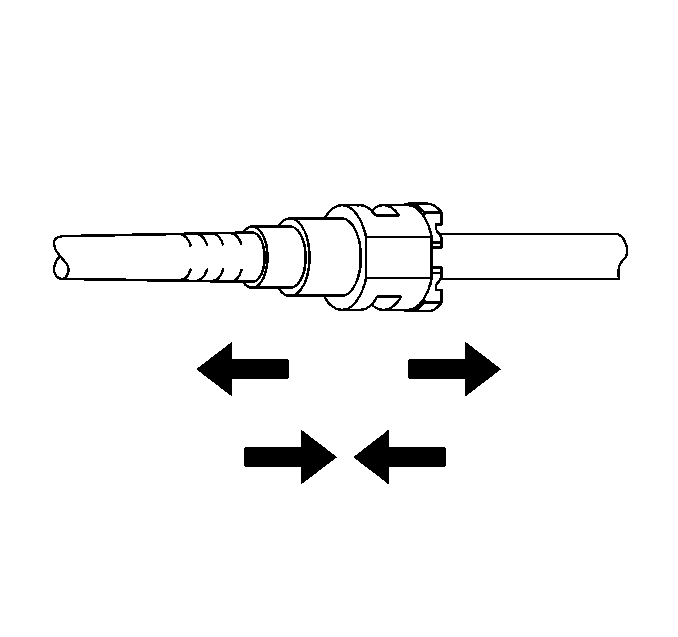

| 15.1. | Turn ignition switch to ON for 2 seconds. |
| 15.2. | Turn the ignition switch to OFF for 5 seconds. |
| 15.3. | Turn the ignition switch ON. |
| 15.4. | Check for fuel leaks. |
Notice: Use the correct fastener in the correct location. Replacement fasteners must be the correct part number for that application. Fasteners requiring replacement or fasteners requiring the use of thread locking compound or sealant are identified in the service procedure. Do not use paints, lubricants, or corrosion inhibitors on fasteners or fastener joint surfaces unless specified. These coatings affect fastener torque and joint clamping force and may damage the fastener. Use the correct tightening sequence and specifications when installing fasteners in order to avoid damage to parts and systems.

Tighten
Tighten the nuts to 3 N·m (27 lb in).
